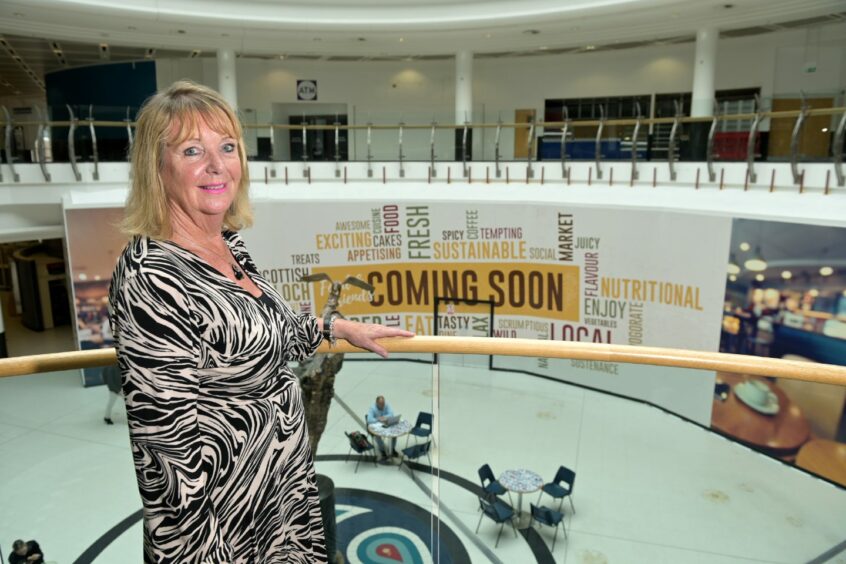The Eastgate shopping centre in Inverness has roared back from the Covid doldrums, posting year-on-year footfall up more than 40%.
Using information supplied by retail data analytics firm Springboard, Eastgate manager Jackie Cuddy said footfall – or shopper numbers – increased by 43.7% last month.
December numbers for the centre were on par with the Scottish average, she added.
Ms Cuddy said: “The figures I have had in so far are very encouraging, with some tenants out-performing 2019.”
Meanwhile, the Scottish Retail Consortium (SRC) said this country’s shops had enjoyed their best end-of-year results since the onset of the pandemic in early 2020.
Despite December footfall dropping 9.9%, compared with three years ago, this was 5.1 percentage points better than the fall in November.
The SRC-Sensormatic IQ data covers the five weeks from November 27 to December 31.
Shopping centres saw the sharpest rebound and although footfall declined by 12.7% last month, this was a 14.9 percentage point increase on the previous month.
Best results since onset of pandemic
SRC director David Lonsdale said: “Buoyed by festive spending in the build-up to Christmas and discounting by retailers in the immediate aftermath, this was a far sprightlier and encouraging end to the year for shopper footfall in Scotland and the best results since the onset of the pandemic in early 2020.
“Compared with pre-pandemic times, December saw the best monthly performance of 2022 and recorded the biggest monthly improvement in store visits since Covid-era restrictions were rescinded last March.
“All retail destinations benefitted, with shopping centres and the major cities all turning in their best foot-traffic results of last year.
He added: “There was a stark improvement when looking at the comparable period one year before, back in December 2021.
“However, this was flattered greatly, given back then fresh Covid curbs were being introduced in the middle of the month – including the instructions to work from home and socialise less.”
Store visits in Scotland are still one-tenth below pre-pandemic levels and weaker than across the UK as a whole, he said.
The SRC director also cited the cost-of-living crisis, tax increases and the introduction of the deposit return scheme adding to headwinds affecting the retail sector – making “turning browsing into buying” a difficult prospect.
‘Much better’ results from Next
A snapshot of the improvement can be gleaned from Next’s results for the nine weeks to December 30, which came in “much better” than expectations.
Next’s full-price sales were up 4.8%, while pre-tax profits guidance for the year increased by £20 million to £860 million.
Next said it was “cautious about the year ahead,” forecasting sales to be down 1.5% and profits falling by 7.6% as cost pressures bite.
Confident consumers
Simon Wolfson, the retail giant’s chief executive, said: “Employment has held up very strongly – that’s unusual in a recession; that has given people confidence to spend through the Christmas period.”
Next also put its better-than-forecast performance down to it underestimating the negative impact of Covid-19 on its stores in 2021, as well as the positive impact of improved stock levels this year.
High street stalwart Boots also cheered a “very strong Christmas” as it revealed sales jumped by around 15% in December.
Like-for-like sales also grew 8.7% during the three months to November 30, against the same period last year.
Boots said this included a bumper Black Friday, which saw the firm record its “biggest ever day” for online sales.
December rally
Sensormatic Solutions retail consultant Andy Sumpter said: “Physical retail rallied in December.
“Retailers rose above an onslaught of festive disruption, from snow chaos to rail and mail strikes impacting consumers’ shopping journeys both on and offline.
“Looking ahead to 2023, retailers will be hoping for more stability and support to help them chart a trading course for success in the light of continued economic headwinds.”




Conversation